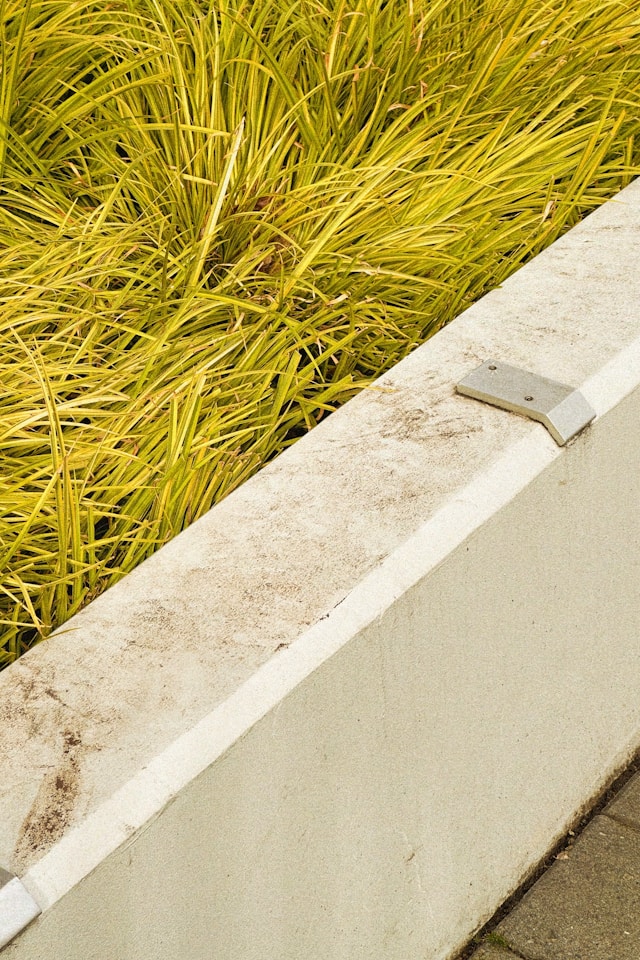Overview
Fescue grass is good for pets and maybe the best grass for pet owners because it is not poisonous to dogs and it may be the most durable grass for dogs and cats. For water conservation and weed prevention, I have enjoyed artificial turf, but for those who want a real, natural ground cover like grass, fescue is probably one of if not the most popular choice, at least in California.
So you know, we check the flowers we feature on our site with the ASPCA and do extensive internet research for both the common and scientific name just to be super pet safe. If we cannot find direct reference, we check up to genus and so on until we can confirm whether a plant is toxic or non toxic to both cats and dogs. If we are not sure, or get contradictory information, we do not include it. Many of the plants featured we have grown successfully in our own pet safe garden in Northern California. You can see many of garden stars in photos from Lovie’s Pet Safe Garden.

Physical Attributes
Fescue grasses are cool-season grasses with thin, bunching growth habits. The leaf blades are narrow, ranging from light to deep green in color. Fine fescues have hair-like leaves while tall fescues have wider, coarser blades. Most varieties grow 6-24 inches tall depending on the species.[1][2]
General Care Tips and Pointers
Plant fescue in full sun to partial shade. It prefers well-drained, fertile soils but can tolerate drier, poorer soils better than many other grasses. Water deeply but infrequently once established. Mow tall fescue at 3-4 inches and fine fescues at 2-3 inches. Overseed thin areas annually and dethatch to prevent excessive thatch buildup.[1][2][3]
Fun Facts/Trivia
There are over 100 species of fescue grasses, both cool-season and warm-season varieties. The name “fescue” derives from the Latin word for stalk or blade. Fine fescues like red fescue are among the most shade-tolerant grasses. Tall fescue is a popular choice for lower-maintenance lawns and erosion control due to its deep root system.[1][2][3]
Citations:
[1] https://search.proquest.com/openview/63b6f1aa629d1bed3196e3dde1b713a1/1?cbl=54151&pq-origsite=gscholar
[2] https://www.sciencedirect.com/science/article/abs/pii/S2352009420300961
[3] https://www.feedipedia.org/node/395
[4] https://www.agric.wa.gov.au/grains-research-development/annual-ryegrass
[5] http://ukmpa.marinebiodiversity.org/uk_sacs/communities/zostera/z9.htm
| Consideration | Details |
|---|---|
| Container Friendly | No, fescue grasses are not well-suited for containers.[1][2][3][4] |
| Indoor/Outdoor | Outdoor[1][2][3][4] |
| Sun/Shade | Full sun to partial shade[1][2][3][4] |
| Perennial/Annual | Perennial[1][2][3][4] |
| Flowering | Does not produce ornamental flowers.[1][2][3][4] |
| Drought Tolerant | Yes, tall fescue is drought tolerant once established. Fine fescues have moderate drought tolerance.[1][2][3] |
| Pollinator Magnet | No, not known to attract pollinators.[1][2][3][4] |
| Beginner Friendly | Yes, fescue grasses are relatively low-maintenance for beginners.[1][3][4] |
| Good Ground Cover | Yes, fescue forms a dense turf when established.[1][2][3][4] |
| Good Privacy Screen | No, grows too short for a privacy screen. |
| Invasive/Spreader | No, fescue grasses spread slowly by bunching growth.[1][3] |
| Dog & Cat Durable | Yes, fescue lawns can tolerate pet activity.[1][3] |
| Rodent Repellent | Unknown, but likely not a rodent repellent. |
| Deer Resistant | Unknown, but likely not deer resistant. |
| Native | No, fescue grasses are not native to North America.[1][2][3] |
Citations:
[1] https://www.uaex.uada.edu/publications/pdf/FSA-6118.pdf
[2] https://www.extension.purdue.edu/extmedia/TURF-13-W.pdf
[3] https://www.lawnstarter.com/blog/grass-guides/tall-fescue-lawn-maintenance-guide/
[4] https://hgic.clemson.edu/factsheet/tall-fescue-maintenance-calendar/
[5] https://extension.umn.edu/lawns-and-landscapes/planting-and-maintaining-fine-fescue-lawn





